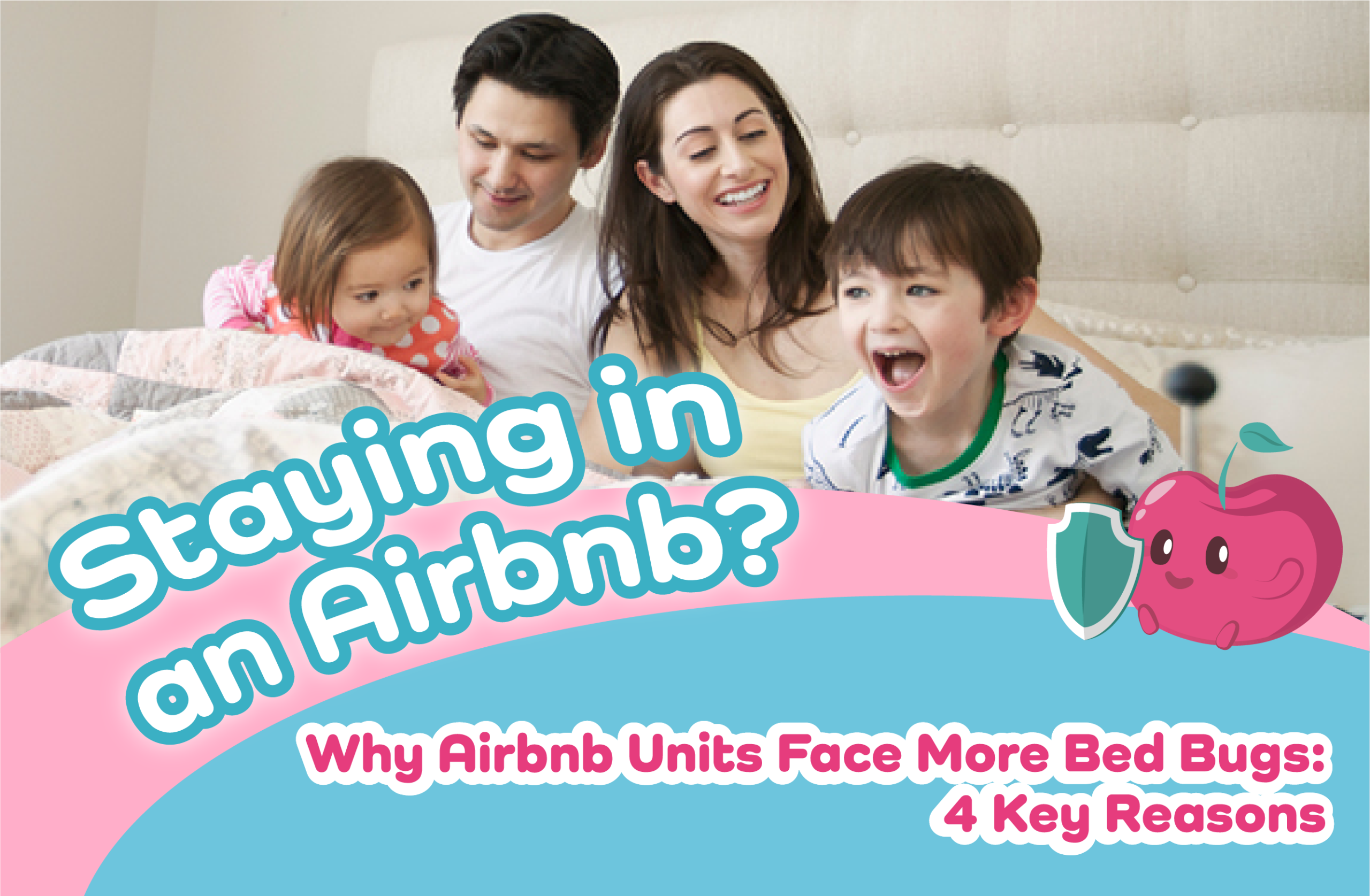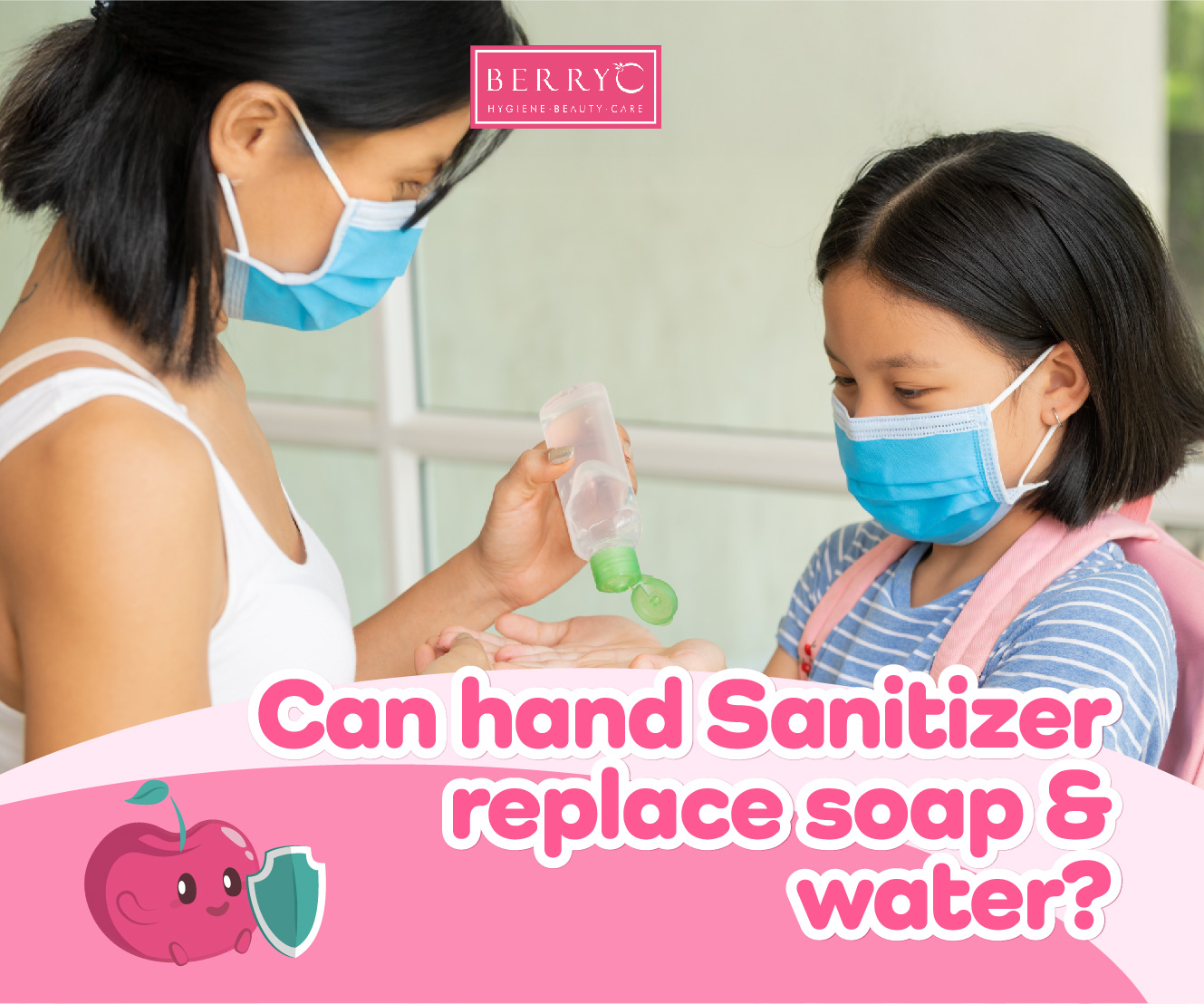Why Airbnb Units Face More Bed Bugs: 4 Key Reasons
Airbnb feel homey and budget-friendly, but in Malaysia’s warm, humid climate they can also attract unwanted “guests” which is the bed bugs. These tiny insects hitchhike in luggage and furniture, then hide in seams and crevices. The good news: a little awareness, a quick room check, and a travel-friendly spray can reduce the risk a lot. Below, we break down the four main reasons Airbnbs tend to have more issues than big hotels, how to check a room in under two minutes, and a simple, kid-safe solution you can carry anywhere.
4 Key Reasons Bed Bugs Appear More Often in Airbnbs
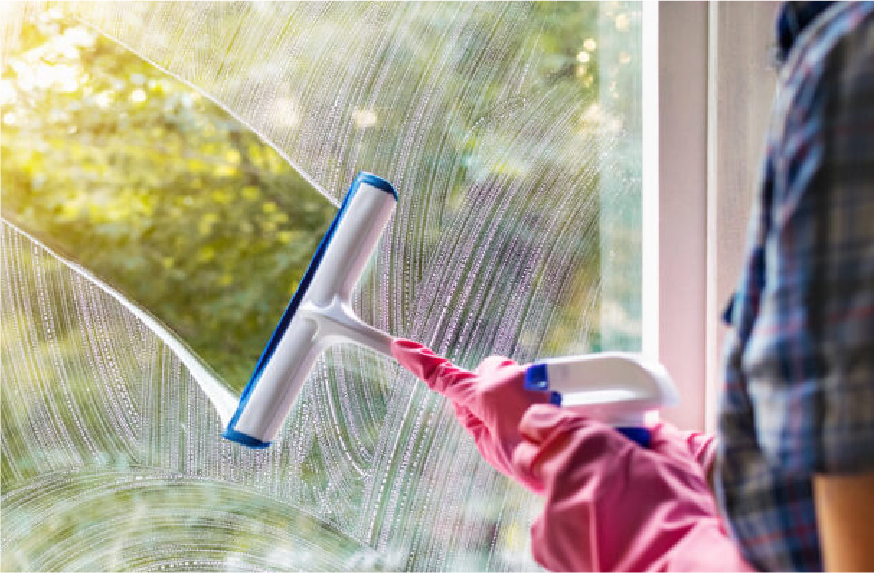
1) High turnover + short cleaning windows
- Popular units may host different guests every 1–3 nights, especially around school holidays and long weekends.
- Turnaround time is tight, so deep inspections (lifting mattresses, checking headboards, steaming seams) get skipped.
- Bed bugs are expert hitchhikers—one suitcase, one blanket, or one fold-out sofa can be enough to seed a new infestation.
- In Malaysia’s year-round warmth, bugs and eggs develop faster, so a small problem can snowball between back-to-back bookings.
2) Outsourced cleaning with inconsistent SOPs
- Many hosts outsource to independent cleaners or domestic helpers (often Indonesian workers in Malaysia). Each cleaner may follow a different routine, and there’s rarely a brand-wide, audited SOP like hotels have.
- Without a fixed checklist (e.g., seam inspections, encasement checks, heat/steam protocols), small signs—pepper-like specks, shed skins, tiny blood dots—are easily missed.
- This isn’t about nationality; it’s about consistency and training. When cleaning standards vary by person, bed bugs slip through the cracks.
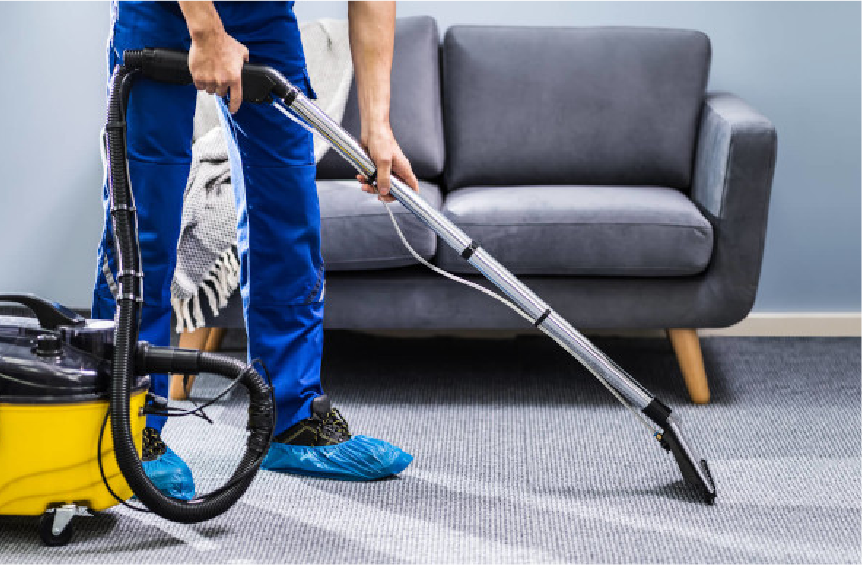
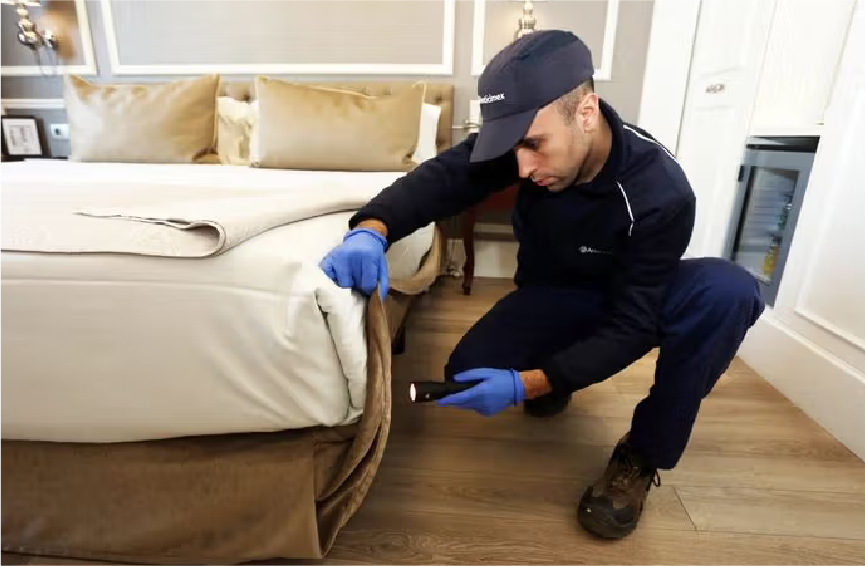
3) Lighter pest-control standards than major hotels
- Major hotel chains usually do scheduled pest inspections, staff training, mattress encasements, and documented treatments.
- Individual Airbnb hosts may rely on ad-hoc sprays only when guests complain. That reactive approach allows hidden eggs to survive.
- Some units add soft furnishings (rugs, cushions, books) to feel “home-like,” but these create more hiding places than a typical hotel room.
4) Furniture mix, second-hand buys, and shared buildings
- Many Airbnbs are furnished with a mix of new and pre-loved items—great for cost and style, risky for pests if not heat-treated.
- Condos and apartments share walls and common areas; bugs can travel along cracks or piping from one unit to another.
- Malaysia’s high humidity helps bed bugs and dust mites stay active; tightly sealed rooms with weak airflow can make early signs harder to spot.
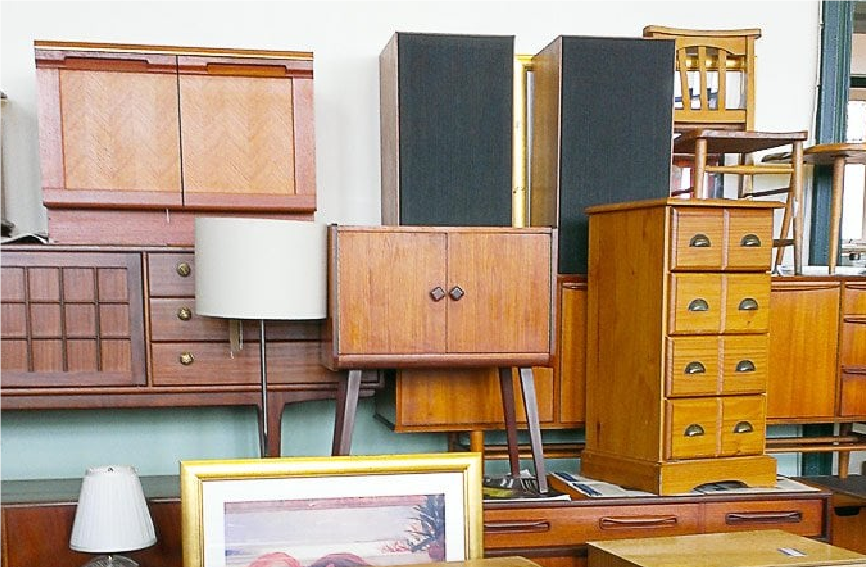
How to Check an Airbnb for Bed Bugs (3 quick traveler tips)
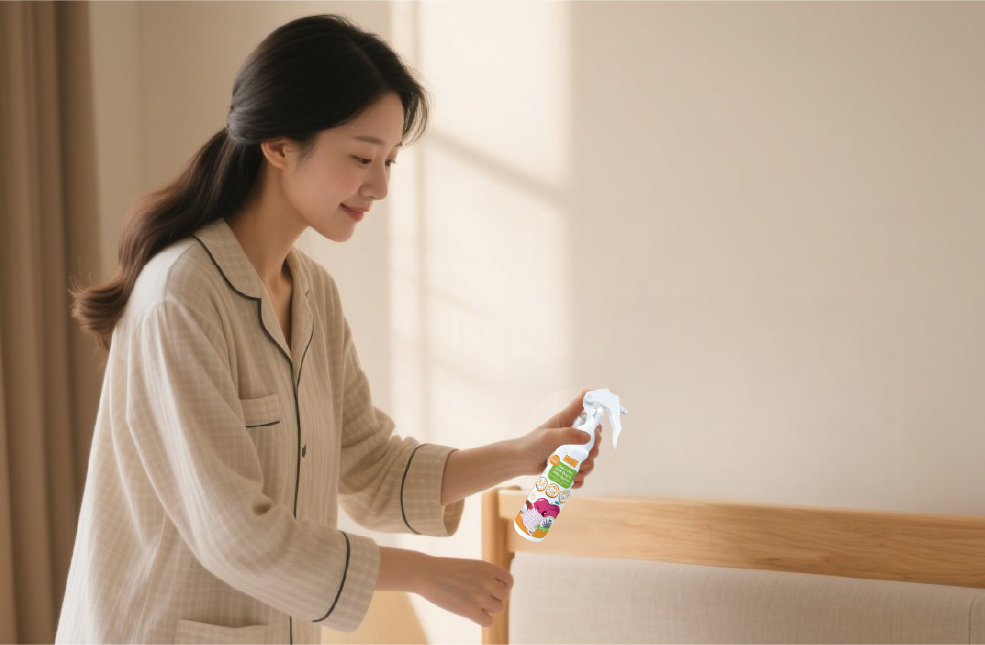
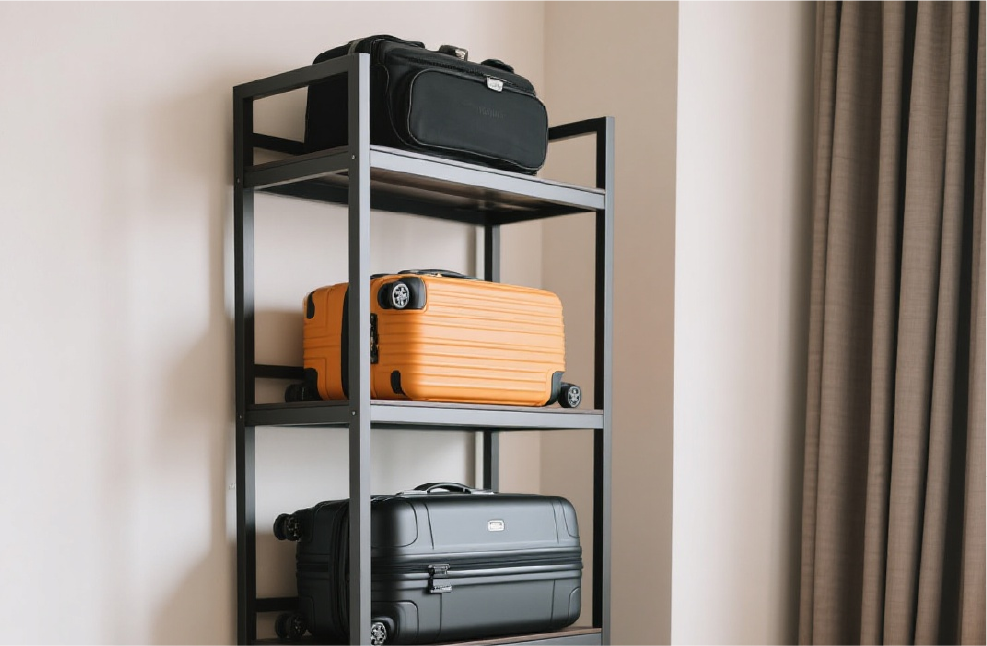
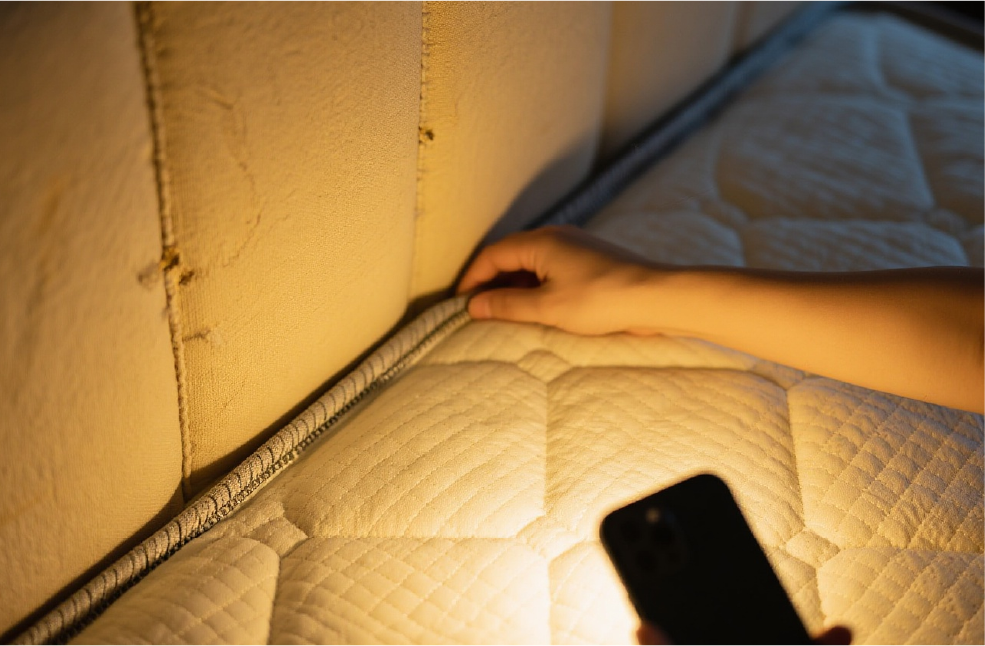
Tip 1: Park your luggage on a hard surface first
- Place bags in the bathroom or on a metal rack while you check the bed. Avoid soft chairs and the bed itself until the room is cleared.
- A simple luggage stand or a hard floor buys you time and prevents hitchhikers from climbing in.
Tip 2: 60-second bed inspection
- Pull back the sheets and look along mattress seams, corners, and the piping—use your phone’s flashlight.
- Check the headboard edges and where the mattress meets the base.
- What to look for: tiny brown/black specks (droppings), pale shed skins, or pin-head eggs near seams.
Tip 3: Treat high-risk zones before you settle in
- Lightly spray the mattress seam line, pillowcases, and bed base edges with a safe, fabric-friendly bed bug spray.
- Repeat on soft furnishings you’ll actually use (sofa edge, cushion seams). Allow to air-dry before resting.
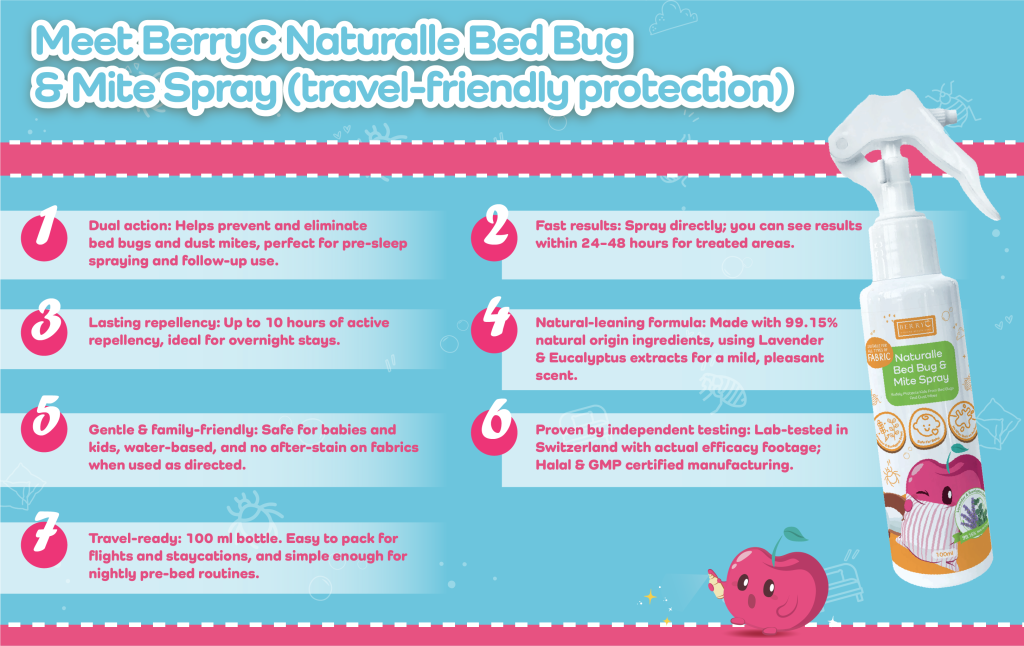
How to use on arrival (simple routine):
- Shake gently. From ~15–20 cm away, mist a light, even layer on mattress seams, pillowcases, bed base edges, and sofa cushion seams you’ll use.
- Re-apply nightly during your stay, especially after housekeeping or if you move the bedding.
Why travelers like it:
- Home-and-hotel flexibility: The same bottle works at home (e.g., kids’ mattresses, guest rooms) and on trips.
- Kid-comfort focus: Mild scent won’t overwhelm enclosed rooms; gentle for sensitive skin households.
- Peace of mind: A quick spray routine turns “I hope it’s clean” into an action plan.
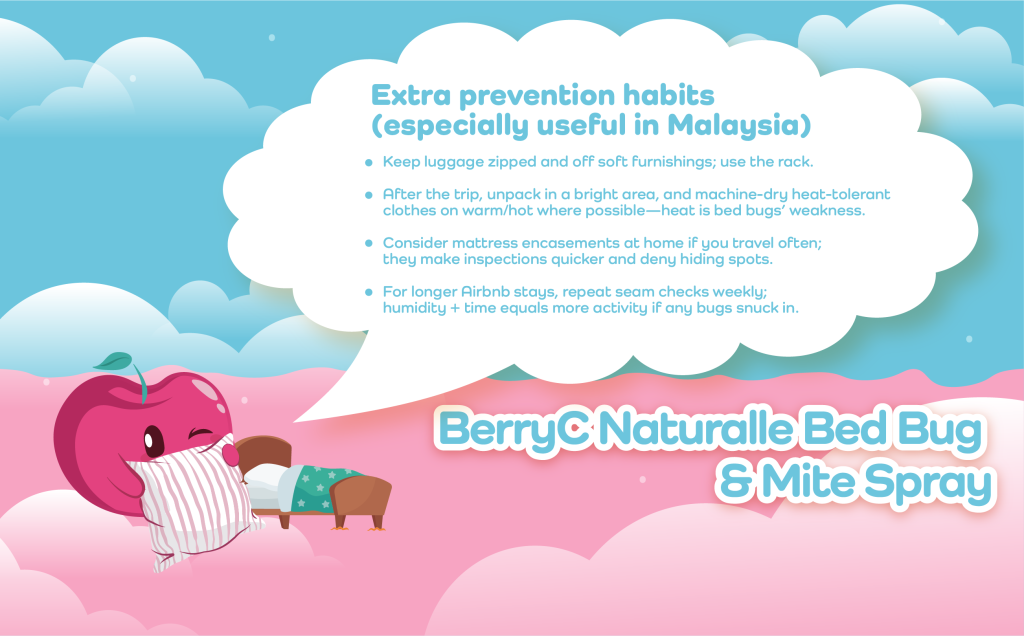
Summary
Airbnbs in Malaysia are cozy and convenient, but higher guest turnover, inconsistent cleaning SOPs, lighter pest-control routines, and mixed furnishings make them more prone to bed bugs than major hotels. A fast luggage-off-bed routine, a one-minute seam check, and a targeted pre-sleep spray dramatically lower your risk. For families and frequent travelers, BerryC Naturalle Bed Bug & Mite Spray offers a gentle, travel-ready, lab-proven way to prevent and eliminate bed bugs and dust mites with up to 10 hours of repellency and a 99.15% natural origin formula—so you can rest easier wherever you stay.

